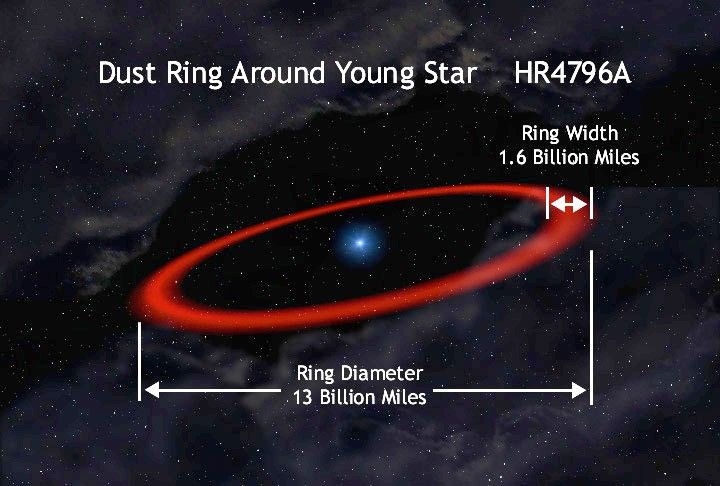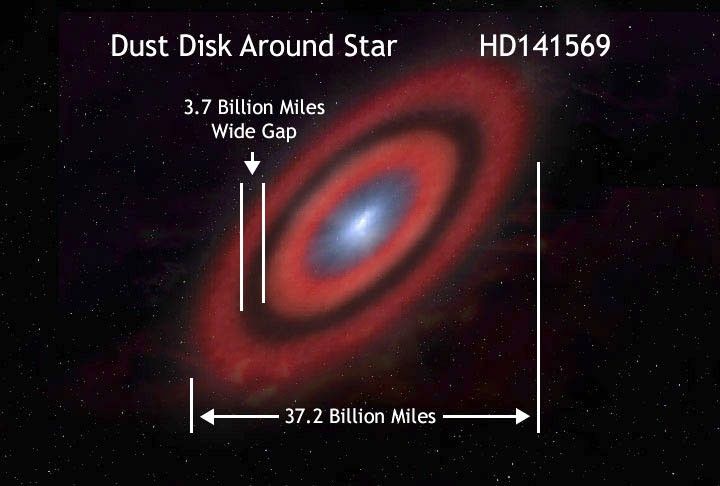1 min read
Gap in Stellar Dust Disk May Be Swept Out By Planet

A striking NASA Hubble Space Telescope near-infrared picture of a disk around the star HD 141569, located about 320 light-years away in the constellation Libra. Hubble shows that the 75 billion-mile wide disk seems to come in two parts: a dark band separates a bright inner region from a fainter outer region. The structure superficially looks much like the largest gap in Saturn's rings - but on a vastly larger scale.
The Hubble image, taken at a wavelength of 1.1 microns, was made using the coronagraph in the Near Infrared and Multi-Object Spectrometer (NICMOS) to reduce the glare of the star. The observed radiation from the disk is caused by dust particles which reflect the light of the central star.
The dark spikes in the image are regions where there are no useful data due to diffraction artifacts introduced by the optical systems of the telescope and camera. The central portion of the disk remains unseen because of residual glare from the bright star.
About the Object
- R.A. PositionR.A. PositionRight ascension – analogous to longitude – is one component of an object's position.15h 49m 57.74s
- Dec. PositionDec. PositionDeclination – analogous to latitude – is one component of an object's position.-3° 55' 16.35"
- Object NameObject NameA name or catalog number that astronomers use to identify an astronomical object.HD 141569
- Release DateJanuary 8, 1999
- Science ReleaseHubble Views of Dust Disks and Rings Surrounding Young Stars Yield Clues
- CreditCredit: Alycia Weinberger, Eric Becklin (UCLA), Glenn Schneider (University of Arizona) and NASA
Related Images & Videos

Dust Ring Around Star HR 4796A Offers New Clues Into Planet Formation
A NASA Hubble Space Telescope false-color near infrared image of a novel type of structure seen in space - a dust ring around a star. Superficially resembling Saturn's rings – but on a vastly larger scale – the "hula-hoop" around the star called HR 4796A offers new clues into...
Share
Details
Last Updated
Aug 17, 2025
Contact
Media
Claire Andreoli
NASA’s Goddard Space Flight Center
Greenbelt, Maryland
claire.andreoli@nasa.gov































